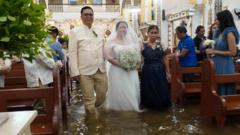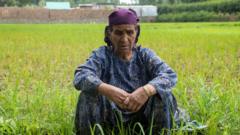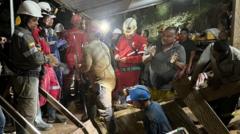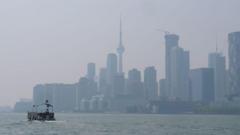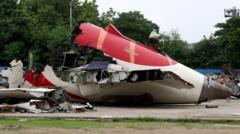The upcoming Hajj pilgrimage, set to begin amidst soaring temperatures, has become an endurance challenge for both pilgrims and the hosting Saudi authorities. In the wake of last year's fatalities, scrutiny over safety protocols intensifies as the world watches.
Hajj Pilgrimage: A Test of Resilience Amidst Rising Temperatures and Safety Concerns

Hajj Pilgrimage: A Test of Resilience Amidst Rising Temperatures and Safety Concerns
As millions prepare for the annual Hajj in Mecca, the Saudi government faces pressure to enhance safety measures following previous tragedies.
The Hajj pilgrimage, recognized as one of the largest global gatherings, is just around the corner, set to commence in Mecca, Saudi Arabia. This year, the event poses significant challenges due to rising temperatures that test the limits of both the pilgrims undertaking the journey and the Saudi government's preparations to ensure safety.
According to Saudi officials, over 1.4 million pilgrims have already arrived from various countries since Sunday, highlighting the massive scale of this year's event. However, following the tragic news of more than 1,300 deaths during last year's pilgrimage—an overwhelming proportion of whom were unregistered individuals lacking the necessary permits for access to protective measures against the heat—the scrutiny toward the kingdom's safety protocols has become acute.
The Hajj is one of the Five Pillars of Islam, a fundamental ritual that demands every able-bodied Muslim with the financial means to perform it at least once in their lifetime. Taking place annually during the final month of the Islamic lunar calendar, many pilgrims arrive early to also engage in additional religious practices in Medina, the city's other holy site, and to perform a lesser pilgrimage known as Umrah prior to Hajj.
As temperatures continue to rise, the Saudi authorities are tasked with implementing measures to mitigate the impact of the heat on the millions of pilgrims, including providing shaded areas and water supplies, as well as monitoring heat-related incidents closely. Awareness and education about safety protocols during the pilgrimage are crucial to preventing tragedies in the future.
The focus on the potential risk factors associated with climate change adds another layer to the complexities surrounding the Hajj. While religious devotion fuels the commitment to undertake this spiritual journey, the environmental realities compel a reevaluation of logistics and safety measures.
In conclusion, as pilgrims prepare for an experience steeped in tradition and faith, the challenge for Saudi Arabia lies in not only upholding the sanctity of this beloved event but also ensuring the safety and well-being of those participating in it—a responsibility magnified by the lessons learned from past tragedies.


